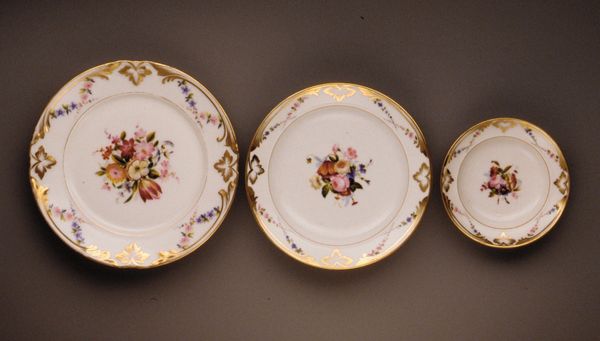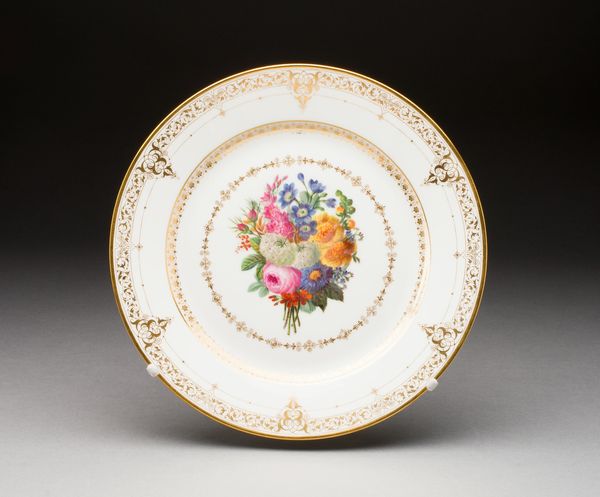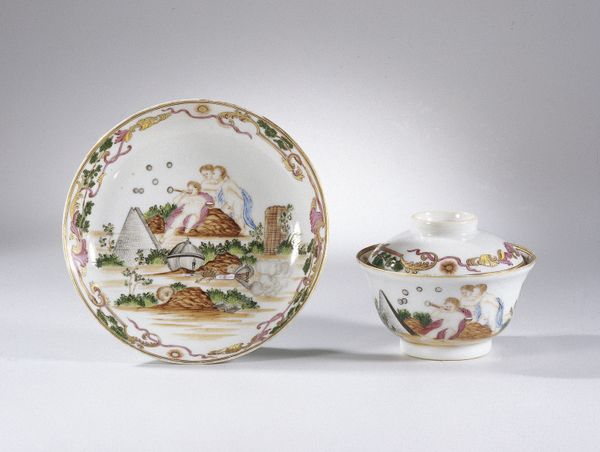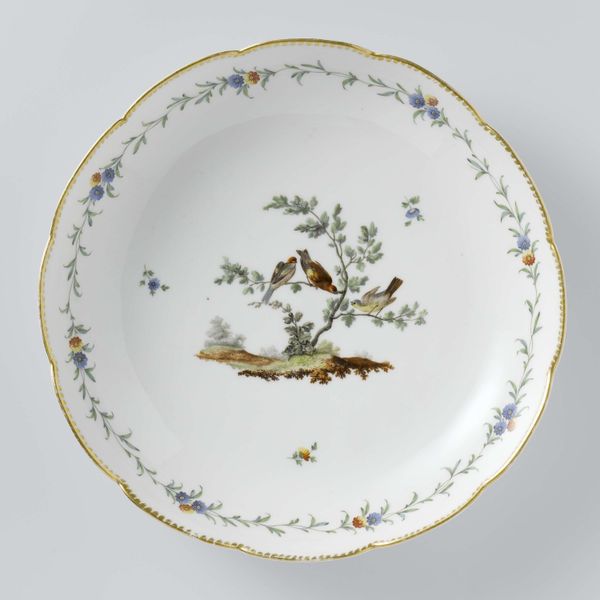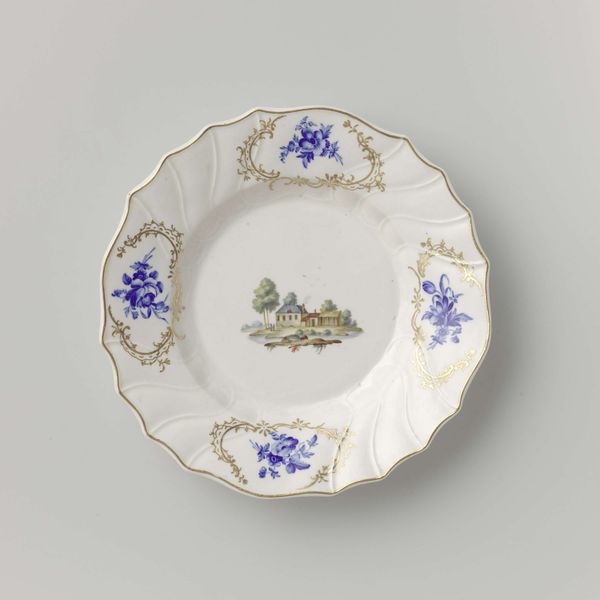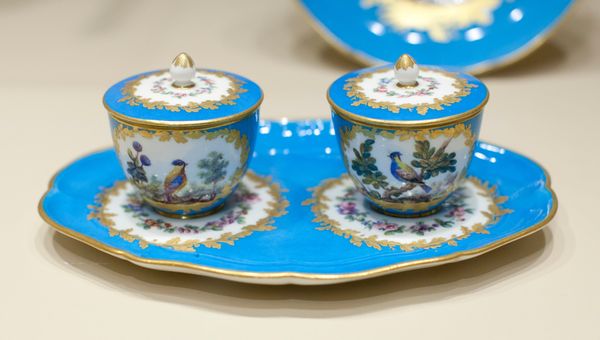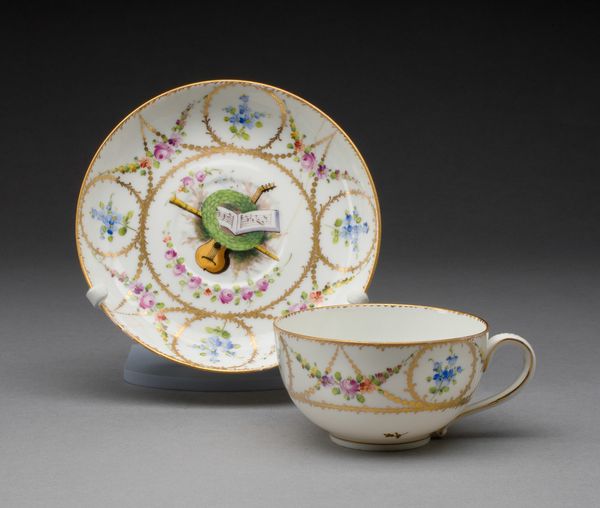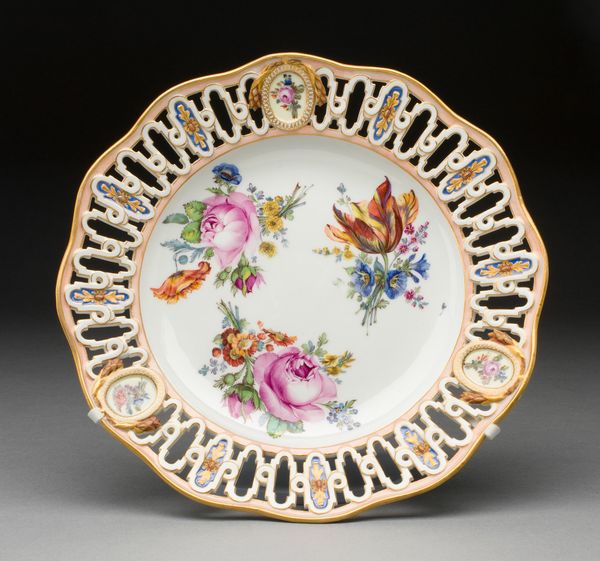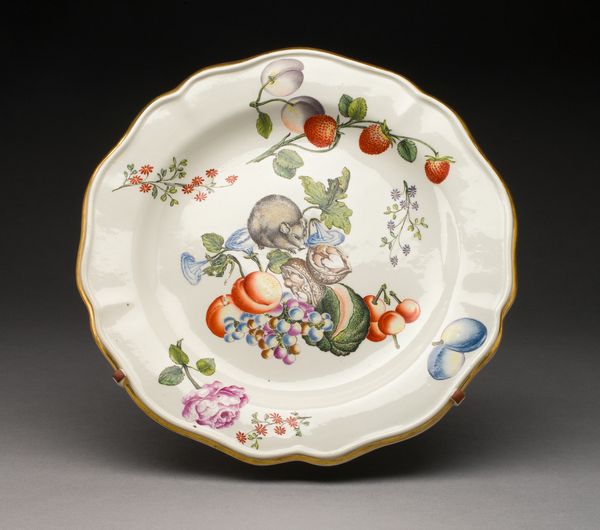
Dimensions: 2 3/4 x 2 7/8 x 2 3/8 in. (6.99 x 7.3 x 6.03 cm)
Copyright: Public Domain
Curator: So whimsical! These Rococo objects, specifically the "Tass à glace" or custard cup with its companion plate, just emanate a sort of aristocratic playfulness, don’t they? Created around 1771 by François-Joseph Aloncle, this set currently resides at the Minneapolis Institute of Art, representing the apex of 18th-century decorative arts. Editor: You're spot on! Honestly, they make me want to throw a costume party— Marie Antoinette style! The turquoise trim practically shouts opulence. But what really gets me are those miniature bird paintings, tucked into little oval frames. So detailed! Did everyone in the 1700s have laser vision? Curator: It's more than mere decoration, though the detail is impressive. The appearance of such refined pieces highlights the strict class hierarchies of the time. Only certain demographics had access to these elaborate items; objects such as this served to perform their elite social standing. Editor: Right, it's about power...displaying a particular lifestyle of leisure. Though, doesn't it strike you as slightly... preposterous? Like, imagine drinking your custard from something so fussy! How did people manage to eat and maintain proper appearances with things this impractical? Curator: I think that tension is crucial, actually. On the one hand, the pursuit of beauty seems utterly removed from the concerns of everyday existence. Yet on the other, that dedication to "useless" beauty provides a sort of utopian fantasy of an elite disconnected from real-world labor and material considerations. The elite used visual culture to bolster power and privilege. Editor: Hmm, interesting... like these pieces aren't *just* pretty objects; they are tools of maintaining power, and they *performed* specific cultural values of wealth and status... That does lend an interesting spin. I wonder, were these the early influencer starter-pack? Curator: Perhaps. What remains is an exquisite window into a historical narrative rife with inequality. The artist was producing luxury items for powerful elites, solidifying existing regimes of power. We, in the present, get to grapple with this artistic legacy. Editor: Totally. Okay, well I can't say I won't look at fancy dessert cups the same way again, thinking about the layered issues of their origin, even with those sweet little birds looking at me! It has made me contemplate what we leave behind... I think that’s a pretty successful moment with some lovely dishware.
Comments
No comments
Be the first to comment and join the conversation on the ultimate creative platform.
